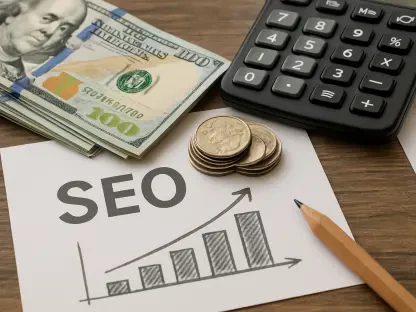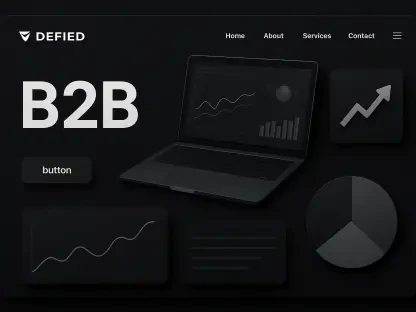In the ever-evolving landscape of digital advertising, businesses are increasingly finding themselves constrained by traditional paid media platforms like Google, Facebook, Snapchat, TikTok, and Amazon. Rising costs and fierce competition have made it challenging for marketers to achieve their desired reach and engagement. As a result, there is a growing interest in exploring the potential of the Open Internet as a viable alternative. This article delves into the current state of digital advertising, the limitations of traditional platforms, and the opportunities presented by the Open Internet through programmatic advertising.
The Challenges of Traditional Paid Media Platforms
Rising Costs and Competition
Digital marketers are facing escalating costs on traditional paid media platforms. As businesses continue to compete for the same ad space, the cost per click (CPC) and cost per impression (CPM) have surged significantly. This scenario has resulted in a situation where companies need to invest more each year just to maintain their previous levels of reach, let alone expand it. Consequently, the ad spaces are becoming increasingly crowded, making it more difficult for businesses to have their ads noticed and to capture the attention of their intended audiences.
Moreover, the competition among businesses has intensified, leading to a significant increase in the overall expenditure on digital advertising. This overcrowded environment means that ads are often lost in the noise, failing to stand out from the sea of other similar promotions. The challenge is further compounded by the fact that traditional platforms increasingly incorporate complex algorithms that favor only the highest bidders, making it difficult for smaller businesses with limited budgets to compete with larger, more established companies. As costs rise and competition stiffens, digital marketers are left frustrated with their inability to achieve effective reach and engagement.
The Concept of Walled Gardens
Platforms like Facebook, Google, and Amazon operate as “walled gardens,” creating a closed advertising ecosystem that keeps advertisers within their boundaries. These platforms typically control access to their audience data and limit advertisers’ visibility into performance metrics, which can be frustrating for businesses striving to maximize their marketing efficacy. By operating in these walled gardens, advertisers are often compelled to rely on auction-based ad placements, which drive up costs and limit transparency.
Furthermore, the lack of data transparency within these platforms restricts marketers from effectively optimizing their strategies. The inability to gain comprehensive insights into campaigns’ performance means that advertisers cannot accurately measure the return on their investments. The confined nature of walled gardens also results in limited customer engagement opportunities, as businesses are unable to interact with their audience beyond the platform’s ecosystem. This situation highlights the inherent challenges of relying heavily on traditional paid media channels, including increased costs, limited data access, and restricted marketing potential.
Exploring the Open Internet
Defining the Open Internet
The Open Internet encompasses a vast array of websites, apps, and platforms outside the boundaries of the large traditional channels. It includes niche websites, streaming services, digital out-of-home (DOOH) advertising, and more. This expansive ecosystem offers businesses the flexibility to reach their target audiences in places where they naturally spend their time, such as blogs, apps, and podcasts. By tapping into the Open Internet, businesses can break free from the overcrowded social feeds of traditional platforms.
This broader digital environment allows businesses to expand their marketing efforts beyond the constraints of the dominant platforms. The diversity of content and communities within the Open Internet offers unique opportunities for more personalized and contextually relevant ad placements. For example, placing an ad for new hiking boots next to an article about outdoor adventures ensures that the message resonates with users who have an interest in hiking. Consequently, businesses can connect with their audience more effectively by aligning their ads with relevant content. Despite the potential benefits, tapping into the Open Internet requires a sophisticated approach to ensure ads are placed wisely across the diverse digital landscape.
Advantages of the Open Internet
One of the primary advantages of the Open Internet is the broader reach it offers. Businesses are not limited to the audience constraints of traditional platforms and can target users across various digital spaces relevant to their brand. The Open Internet allows companies to take advantage of niche audiences and engage with users on websites, blogs, and other digital environments where users spend a significant amount of their time. This broader reach translates to more extensive engagement opportunities and the potential to capture the attention of users in a more relevant and impactful manner.
Additionally, the Open Internet provides contextual relevance, enabling ads to be placed alongside content that aligns with the product or service. This alignment increases the likelihood that users will find the ads engaging and relevant to their interests. For example, an advertisement for fitness equipment shown next to an article about home workout routines is likely to attract more attention and interest from fitness enthusiasts. The ability to place ads in contextually appropriate settings enhances the overall ad effectiveness and helps businesses create meaningful connections with their audience. This approach to advertising not only increases engagement but also improves the chances of converting viewers into customers.
Programmatic Advertising: The Key to the Open Internet
Understanding Programmatic Advertising
Programmatic advertising automates the process of buying digital ad space. It utilizes advanced algorithms and real-time bidding (RTB) to place ads on websites, apps, and streaming services across the Open Internet. This approach ensures that ads are shown to people most likely to be interested in them based on demographics, browsing habits, and the content they are currently viewing. Programmatic advertising offers a more efficient and effective way to reach target audiences.
The use of data-driven algorithms in programmatic advertising eliminates much of the guesswork and manual effort traditionally involved in ad placements. This automation allows for more precise targeting, ensuring that ads reach the right users at the opportune time. By leveraging data on users’ behaviors and preferences, programmatic advertising can deliver highly relevant ads that resonate with individuals’ current interests. As a result, businesses can optimize their advertising spend, increase engagement, and achieve better overall campaign performance. The real-time nature of programmatic advertising also means that campaigns can be dynamically adjusted in response to performance metrics, allowing for continuous improvement and optimization.
Benefits of Programmatic Advertising
Programmatic advertising provides several advantages for businesses. One of the key benefits is real-time optimization. Campaigns can be adjusted on the fly based on performance metrics. If an ad isn’t delivering results, programmatic tools adapt the strategy to optimize the budget effectively. This dynamic approach ensures that businesses get the most out of their advertising spend. Additionally, programmatic advertising offers broader reach and contextual relevance, making it a powerful tool for digital marketers.
The ability to optimize campaigns in real-time translates to more efficient use of advertising budgets. Unlike traditional ad placements, where adjustments can take days or weeks to implement, programmatic advertising allows for immediate changes. This agility ensures that campaigns remain effective and budgets are not wasted on underperforming ads. Furthermore, the broader reach provided by programmatic advertising enables businesses to tap into the extensive ecosystem of the Open Internet, engaging users across diverse digital spaces. Combined with the contextual relevance of placing ads alongside related content, programmatic advertising maximizes the chances of capturing the audience’s attention and driving desired actions, such as clicks or conversions.
Shifts in the Industry
Traditional Platforms Adapting to Change
Traditional platforms are beginning to recognize the need for greater transparency and collaboration with the broader digital landscape. For example, Google’s Privacy Sandbox aims to adjust to a future without third-party cookies by developing new standards that respect user privacy while allowing advertisers to track users. Google’s Display & Video 360 and Amazon’s DSP are initiatives that allow advertisers to run campaigns across the Open Internet using their tools for targeting and optimization. These moves indicate a trend towards a more open and integrated approach to advertising within even the largest platforms.
This shift towards greater transparency reflects a broader acknowledgment of the evolving needs and expectations of digital marketers. By embracing more open standards and providing enhanced tools for campaign management, traditional platforms aim to address some of the limitations that have previously frustrated advertisers. Additionally, these changes signify a recognition of the value of the Open Internet and the importance of integrating it into advertising strategies. As platforms evolve to better align with the principles of openness and collaboration, businesses can expect more effective ways to reach their audiences and optimize their marketing efforts across the digital landscape.
The Growing Consensus
There is a growing consensus among digital marketers that the Open Internet can offer businesses greater flexibility, broader reach, and more effective ad placement through programmatic advertising. As the constraints and increased costs associated with traditional platforms continue to pose challenges, the Open Internet presents a viable alternative. By leveraging programmatic advertising, businesses can navigate this expansive ecosystem and achieve their marketing goals more efficiently.
The recognition of the Open Internet’s potential is driving more businesses to explore this broader digital environment. The ability to reach diverse audiences across various platforms and contexts offers significant advantages over the restrictive nature of traditional channels. Programmatic advertising, with its data-driven and automated approach, provides the tools needed to optimize ad placements and maximize ROI. As more companies experience the benefits of the Open Internet, the trend towards embracing this expansive ecosystem is likely to continue, further shifting the landscape of digital advertising towards a more open and integrated future.
Main Findings
The Potential of the Open Internet
The main finding of this exploration is that the Open Internet, leveraged through programmatic advertising, represents a vast, untapped resource for businesses. By moving beyond the limitations of traditional platforms, digital marketers can reach their target audiences more effectively and efficiently. The use of advanced algorithms and real-time bidding in programmatic advertising ensures that ads are placed in the right spots at the right time, optimizing budgets and improving overall campaign performance.
This shift towards the Open Internet highlights the importance of embracing new technologies and strategies that allow businesses to break free from the constraints of traditional platforms. The broader reach and contextual relevance provided by the Open Internet enable companies to engage with users in more meaningful ways, ultimately driving better results. As businesses continue to explore and leverage the opportunities presented by the Open Internet, the digital advertising landscape is likely to become more dynamic and diverse.
Future Prospects
In today’s quickly changing world of digital advertising, businesses are feeling increasingly limited by traditional paid media platforms like Google, Facebook, Snapchat, TikTok, and Amazon. The rising costs and intense competition on these platforms have made it difficult for marketers to achieve the reach and engagement they need. Consequently, there is a growing interest among marketers to explore the Open Internet as a promising alternative. By leveraging programmatic technology, businesses can tap into a broader network of websites and digital spaces, potentially reducing ad costs while increasing visibility and engagement. This shift towards the Open Internet could democratize advertising, giving smaller businesses a fair chance to compete with larger corporations. As the digital advertising ecosystem continues to evolve, the Open Internet stands out as a viable and exciting option for marketers seeking to overcome the limitations of traditional platforms.









